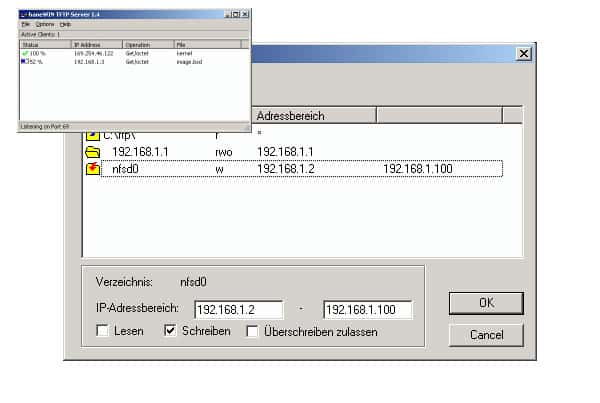

On if the router has this address in TFTP mode. The path is then simply adopted without further typing.


To do this, simply enter “cd” and a space and drag the folder (not the file itself) into the terminal window. To the directory in which the firmware to be uploaded is located. This is much easier than turning on a server with the command line, so we show it here. In this case, it is best to do it via the command line. Sometimes you have a router that works with TFTP, but does not fetch the file from the server (the programs shown above) itself, but wants to have it actively sent. In any case, one of the best TFTP solutions that we know of. The price is more than reasonable.Īnd if you really only have to flash a router, you might even get there within the trial period. It works great and still looks good in its simple design. However, the program should delight those who constantly have to juggle TFTP, SFTP, and FTP. It just works really well.Ī slightly more professional variant is “ Transfer“, which you can test for three days and then have to buy for just under $20. The fact that the design is no longer up to date is irrelevant. TFTP Server is simple and has served us well many times. You still have to set the appropriate network range for this in the system settings, but you will find that in the appropriate recovery instructions. In recovery mode, a router usually queries a specified IP. You can provide the corresponding file there that should be retrieved when accessing the corresponding IP. The first program is simply called “ TFTP Server” and can be downloaded for macOS free of charge. Here we show you two programs that make the whole thing a little more comfortable and save you the command line (and another tip for the “put” command on the command line :)). MacOS comes with an integrated TFTP server, you can easily google it. You need a small TFTP server because you want to flash a router or another small device needs this simple protocol? Nothing easier than that.


 0 kommentar(er)
0 kommentar(er)
